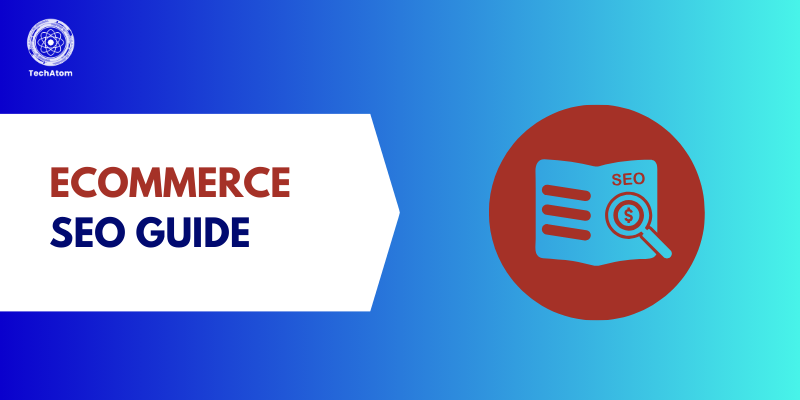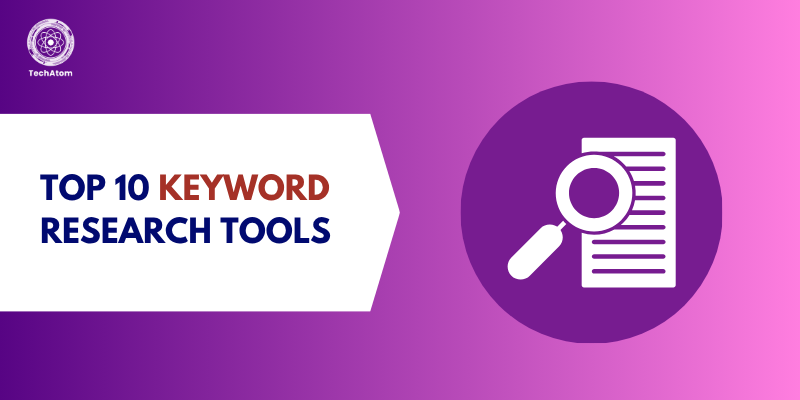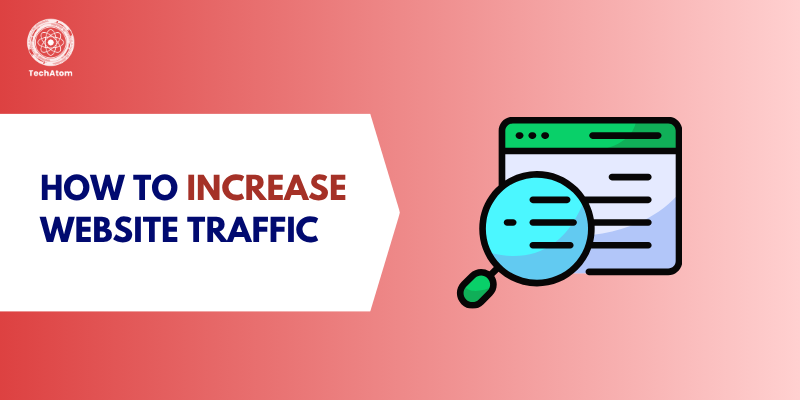Ecommerce SEO is the practice of optimizing an online store to rank higher in search engines like Google or Bing without paying for ads. There are millions of shoppers leveraging search engines to find products. So, it is important to effectively utilize ecommerce SEO to drive organic traffic, acquire visibility, and ultimately drive sales. An online store has some unique SEO challenges in comparison to a traditional website as ecommerce sites typically have a larger number of products and categories. This emphasizes the need for specialized ecommerce SEO tactics.
For ecommerce businesses, SEO is critical. It is a way to drive targeted organic traffic which includes shoppers who are actively searching to buy products without paying for advertising. Higher rankings in search engines lead to greater visibility making your store credible and leading over stores that don't do ecommerce SEO. Additionally, organic rankings typically generate more confidence with consumers than using paid ads, which builds a strong customer relationship. This is vital for growing brand authority and brand recognition in the marketplace.
SEO enhances the traffic generation of an ecommerce site by improving rankings for those keywords that customers searching for items to purchase may use on their product or category pages. Basically, whenever an ecommerce site is able to gain a good ranking, the owner will attract more qualified visitors who are more likely to purchase the items. As a result, the conversion rate will increase and an ecommerce site overall will experience more sales volume.
SEO creates long-term growth by supplying an ecommerce site with a steady stream of relevant and free traffic. Free traffic is inherently attractive because it often proves to be more cost-effective and sustainable as compared to a paid ad channel. Pages that are well optimized containing a variety of attributes, such as keyword-rich descriptions, structured data elements (reviews), easy-to-understand site architecture, and instruction that is helpful to the user experience, will help increase visitor engagement and repeat purchases.
Understanding Ecommerce SEO Basics
Ecommerce SEO uses a unique set of strategies, designed to improve ecommerce sites for search engines. Knowing the basics is very important, as ecommerce sites typically look and function very differently than traditional websites. This is observed in terms of site structure, content, and ergonomic user experience. Knowledge of these basics helps to clear away some common ecommerce obstacles and sets up the process to drive organic traffic and sales.
Difference Between Ecommerce SEO and Regular SEO
Here are a few differences between Ecommerce and regular SEO that will help you understand both easily.
- Ecommerce SEO deals with a much greater scope of pages than typical websites, with many thousands of product and category pages compared to a smaller number of content pages.
- Ecommerce SEO requires management of technical SEO issues like duplicate content, with product variants or variations and pagination with filtered category pages, which require more advanced features than static pages.
- Ecommerce SEO tends to focus on transactional and commercial keywords focused on buyer intent versus primarily informational keywords commonly seen in typical SEO.
- Ecommerce SEO is focused on user experience and fast pathways to purchase, whereas standard content-based websites can afford to prioritize depth of information in site architecture. This generally leads to a slower pathway to purchase or conversion.
- Ecommerce SEO relies heavily on optimizing product content on a cyclical basis to avoid thin content issues, whereas traditional SEO can rely on dated articles that are static and may not change for a period of time.
- Ecommerce SEO includes features that are more complex than content, with canonical tags, structured data, and metadata implementation may be more dynamic because of inventory that may be seasonal or subject to change.
- Both performance and mobile optimization are crucial components, as ecommerce sites generally see direct decreases in conversions when there are slow page load times. While general sites may offer a slight buffer for slower speed.
These aspects make ecommerce SEO much more technical, fluid, and sales-based than general SEO.
Common challenges in ecommerce websites
SEO challenges for ecommerce websites differ compared to standard informational sites. Here's a short list of common issues ecommerce sites face:
- Duplicate Content: Different variations of the same product or filtered category pages, as commonly created in ecommerce, can cause duplicate content issues that dilute rankings.
- Thin Content: Ecommerce sites typically have many products with thin descriptive content. The sheer number of low-quality pages will negatively impact a site's overall SEO performance.
- Large Site Architecture: Ecommerce sites with thousands of product pages require a simple scalable and crawlable architecture that is user-friendly.
- Site Speed and Mobile Experience: Ecommerce stores must load quickly on mobile and desktop as losing customers on a slow loading product page has results, both directly related to sales and ranking detriment.
- Complex URL Structures: Ecommerce product URLs should be short, descriptive, and keyword driven, all while avoiding unnecessary parameters and website menu clutter.
- Technical SEO Issues: A number of technical issues can arise, which can all hurt rankings and click-through rates. Common issues include broken links, missing canonical tags, or poorly implemented schema markup.
Every successful ecommerce SEO strategy must systematically address every issue effectively to ensure an ecommerce site is optimized for search engines and shoppers alike.
Keyword Research for Ecommerce
Keyword research is the cornerstone of ecommerce SEO and plays a vital role in organic visibility and conversions for your ecommerce business. Focus on buyer intent keywords, which are terms that have transactional, commercial, or product-specific intent, for example: “buy running shoes online,” or the “best waterproof Bluetooth speaker.”
Long-tail keywords, such as “eco-friendly yoga mat for men,” can drive targeted traffic with lower competition and high conversion-oriented traffic, due to the specific intent behind the keywords you are targeting. Some methods include using autocomplete on Amazon for product ideas, looking through competitor sites for keyword gaps, and looking at customer-based language on subreddits and review platforms.
Some helpful tools to simplify market keyword research in ecommerce include:
- Semrush Keyword Magic Tool
- Ahrefs Keywords Explorer
- Google Keyword Planner
- Ubersuggest
These tools can help you analyze keyword difficulty, search volume, words with commercial intent, and the rankings for competitors.
On-Page SEO for Ecommerce Stores
It is key to optimize product and category pages for SEO and conversions. You should include your main keywords and related modifiers (e.g., “Best Price,” “20% Off”) in product titles. A unique and persuasive meta description is required as well, making promises like “Free Shipping” or “Top Seller” to click your snippet. There should also be substantial SEO-rich content on a product page, ideally 300+ words, that explains benefits and features, as well as a clear call-to-action. This will help both Google and the customers.
Another way to help your product pages rank is to link from high-authority pages (like your blog) to your important product and category pages. This is best practice for internal linking and a good way to deliver relevant, valuable links to your customers.
Schema markup is still important in ecommerce. Add product schema, review schema, and breadcrumbs so your products display rich snippets in Google for ratings, price, and stock status, which helps your listing stand out in search too.
Technical SEO for Ecommerce
Technical SEO helps connect both users and search bots to content on a site. Aim for a flat site architecture, with any product no more than three clicks away from the homepage. The flatter the site architecture, the more search column index and categorize all links, in addition to improving usability. For pages that feature duplicate content, create a canonical tag and use a noindex tag when applicable, particularly for thin or non-value filter pages. Each product should have one clear URL (not a dynamic URL) and you should re-evaluate your overall site architecture on a regular basis to ensure it works as Stock Keeping Units eventually grow.
Page speed and Core Web Vitals (LCP <2.5s, CLS <.1, FID <100ms) play a direct and proportional role in search ranking and conversions. These include various factors like compress images, reduce code bloat, and invest in high-quality hosting. A mobile-first design is a necessity, use a responsive theme and make sure all content and navigation functions on all sizes regardless of size or shape. Google primarily uses a mobile-first index for all crawling.
Content Strategy for Ecommerce SEO
Product descriptions that are SEO-friendly need to be original, benefit-driven, and include long-tail and related keywords. You can incorporate story-telling and customer language to connect with potential buyers, and avoid the copy-and-paste manufacturer's product descriptions that can result in duplicate content. Blogging encourages traffic and authority with guides, “best of” lists, product comparisons, targeting commercial investigation keywords, and informational intent keywords.
As a bonus, customer pictures and other user-generated content like reviews, FAQs, and Q&As can be a trust signal and create new content with relevant keywords. In addition to user-generated content, leveraging buyer testimonials and embedding video reviews and Q&As directly on the product page can enhance the user experience while adding SEO value.
Link Building for Ecommerce
Quality backlinks are the fuel that drives domain authority. Guest posting opportunities are a powerful way to add backlinks on niche sites, alongside leveraging influencer partners and being featured in roundups or gift guides. Reach out to authors of "best product" lists, sharing anecdotes, feedback, or exclusive samples to generate backlinks directly to product pages. You can also capture unlinked press mentions and engage in digital PR for media exposure and coverage to fuel backlinks.
Work to maintain relationships with suppliers and distributors, ask for mentions on their official retail sites, and seek partnerships with blogs that focus not just on goods but expert roundups. While paid links both offer endorsements, focus on creating opportunities for earned links through content promotion and partnerships, over time your backlinks will accumulate.
Tracking & Measuring Ecommerce SEO
Utilize Google Analytics 4 and Google Search Console to track organic traffic and conversion key performance indicators (KPIs) to evaluate your visibility, engagement, and return on investment for your organic traffic. Consider setting up ecommerce tracking to correlate organic search traffic with sales, as well as position tracking tools such as Semrush and Ahrefs to compare keyword gains and losses in search. Continue tracking product page performance, indexable URLs, and conversion rates to improve campaign optimization, with the end goal being revenue impact.
To get a more advanced perspective of attribution, review assisted conversions and multi-touch models to further explain the impact of SEO in helping customers in longer paths to purchase. An ongoing audit of your key metrics should continue to take place. This enables you to adapt and mitigate ranking and conversion hindrances by utilizing crawl stats and log review to intercept issues before they affect your site traffic and ranking.
Conclusion
Ecommerce SEO today is more than simple keyword targeting, it's establishing a strong technical base and understanding shopper journey, and utilizing new trends like AI-powered search, and voice/visual SERPs. To start, you need a keyword research strategy that takes user intent into account through all stages of the funnel, from broad informational search intent to the buying intent specific to the product. Second, your site will need to be structured based on tiered content, such that every individual product and product category page can be reached quickly and easily, intuitive descriptions and short URLs as possible, facilitating authority throughout the site with internal linking as required. Technical SEO can be considered non-negotiable. You will need to make mobile-first responsive design your top priority, along with getting pages to load as quickly as possible, using canonical tags to address duplicate pages, and schema markup for product reviews/pricing.
It's also essential to consider the usability of product descriptions and to dynamically provide unique value to the blog's content; every product and the blog page should include authentic reviews, provide answers to FAQ, and have great quality images or videos as seen possible. Earning quality backlinks through direct outreach, influencer marketing, publishing helpful articles in your niche, and writing resources or guides that are helpful to your audience is also important as well. Lastly, tracking the performance of these activities through analytics combined with periodic audits of your site to understand how to build upon your previous work, while developing improvements for the future maximize your ROI.
Frequently Asked Questions
1. What is the best ecommerce platform for SEO?
Shopify is a good option for most small to mid-sized stores because of its ease of use, built-in SEO, and speed with mobile-friendly design themes. BigCommerce and WooCommerce provide enterprise SEO control and scalability if you need additional features or customization. Large companies typically use Adobe Commerce (Magento) because of flexibility.
2. Should ecommerce stores use AMP pages?
AMP is generally not recommended for ecommerce in 2025 because it is rigid in terms of design and the functionality it provides. Focus on responsive design as well as speed and mobile optimization to enhance user experience in regards to SEO and overall customer experience.
3. Do product images affect SEO rankings?
Yes. Images that are optimally sized, have descriptive alt text, good compression, and schema markup improve load speed, accessibility, and engagement, and help rank in Google Image Search.
4. Does running ads help with ecommerce SEO?
Initially, ads don't directly provide an SEO ranking benefit, but they will support SEO efforts to improve your brand awareness and visitation, which in turn supports SEO initiatives. Ads give valuable data to inform an organic keyword strategy.
5. Should ecommerce stores use blogs for SEO?
Yes. Blogs support long tail organic traffic with informational keywords, support authority building, internal linking, and engagement, which all assist ecommerce SEO.




